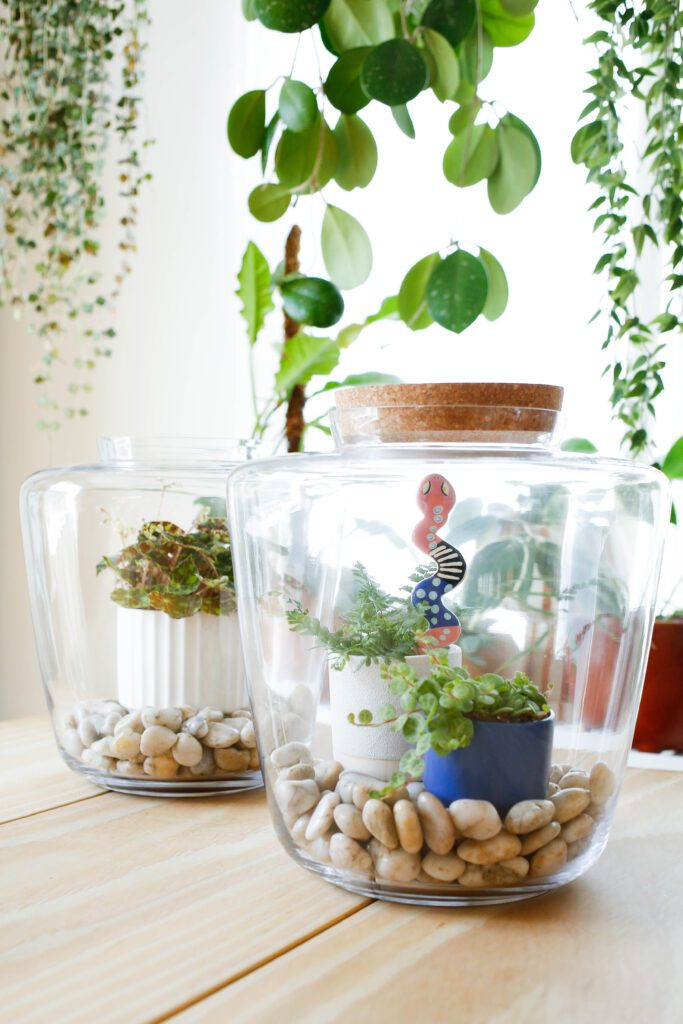
Terrariums are a fun and visually striking way to keep and display plants- especially plants with high humidity needs- but it can feel daunting to set up and maintain them in many shop environments, and requires you to carry supplies like substrates that you may not have the space or expertise for. These challenges shouldn’t prevent you from carrying terrariums though- you just need simpler ways to use them!
Cachepot Terrarium
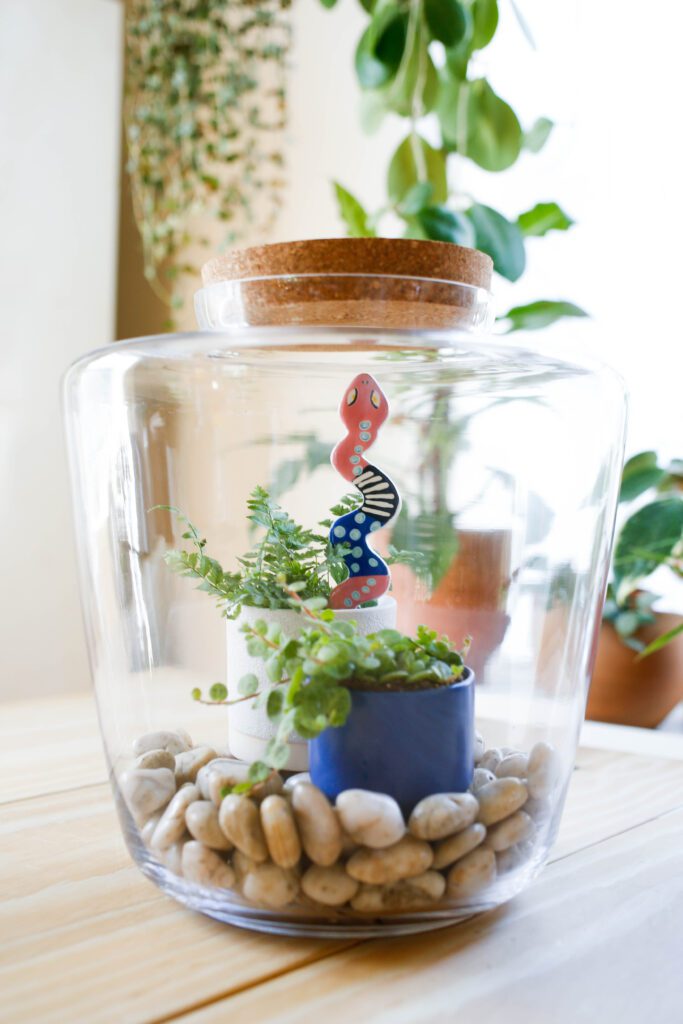

With a larger terrarium like the Message Terrarium (pictured), and an assortment of small pots, petite plants, and some accessories, you can create the effect of a terrarium, with easier care and a faster way to change up the look (or replace plants that don’t survive). This method has the added benefit of offering your customers a more beginner-friendly entry to terrariums as well.
Get The Look:
- Select a few smaller pots that will fit through the opening of your terrarium and can be arranged together nicely inside (I used Delray and Kendall here). Be sure to use pots that are glazed, as raw clay pots tend to absorb excess water, which can discolor them over time.
- Choose plants whose nursery pots will fit inside the pots you selected, look good grouped together, and that do well in higher humidity like ferns, Fittonia (aka Nerve Plants), small Begonias, some Peperomia species, Hypoestes (aka Polka Dot Plants), or Selaginella (aka Spikemoss). I went with a Pteris quadriaurita fern for height and texture, and a Peperomia prostrata (String of Turtles) for color, and its low, creeping growth habit.
- Start with a layer of decorative pebbles- choose a single color/size, or layer a few together. With larger pebbles like the River Stones I used, transferring the pebbles to the terrarium with a towel will prevent any damage to the glass.
- Insert your plants in their pots and adjust until you like the placement.
- Add any additional accessories and terrarium decor like the Wiggle Plant Stick I paired with the fern.
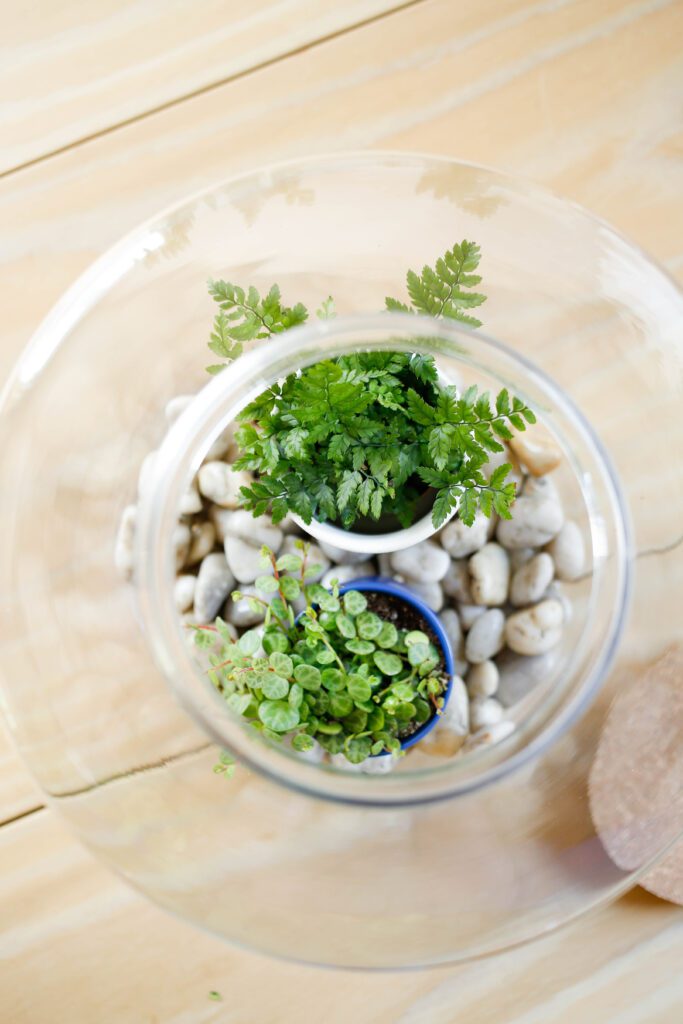

Care:
- Ensure plants are recently watered when you first place them in your terrarium.
- When placing plants, keep leaves away from the sides of the glass, making sure they aren’t touching the glass as any condensation that forms on the glass can cause damage to leaves or make them susceptible to disease.
- Though this version of a terrarium won’t usually have humidity levels as high as a fully planted terrarium, if you keep the lid on your terrarium closed, over time you’ll find that plants may not dry out as fast as they would outside of a terrarium. Check soil moisture levels and ensure they’re appropriate for the type of plant you’ve selected. Remove the plants to water, allowing any excess water to drain out before returning to the decorative pots. Monitor closely to ensure water isn’t pooling in the bottom of the cachepots and empty them anytime you find any water collecting. This will ensure your plants stay healthy and remove a prime spot for pests like fungus gnats to hatch out.
- Place your terrarium in bright, indirect light.
Humidity Capsule
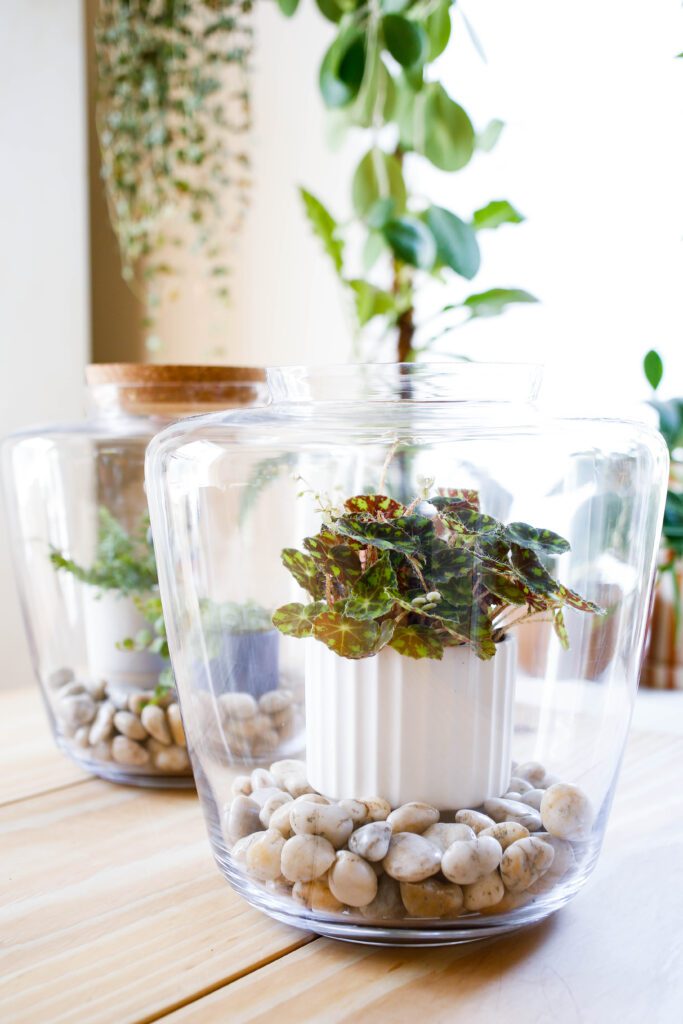

Terrariums are an excellent way to give plants like Alocasias, Begonias, and Ferns the high-humidity environment they need, while creating an interesting plant display as well. The concept is similar to the Cachepot Terrarium, with some slight tweaks.
Get The Look:
- A range of terrarium sizes and types can work for this- just make sure the terrarium is the right size match for the plant- you don’t want leaves touching the glass. I think the Message Terrarium and the Griffith Terrarium work well for many plants up to 4” in size.
- You’ll set this up similarly to how I’ve outlined above, but in this case you’ll just be placing a single plant inside. Select a pot that will fit into the opening of your terrarium, and will fit your plant, (and again is ideally fully glazed to prevent any discoloration to the pot).
- Add accessories if desired, and if you have room.
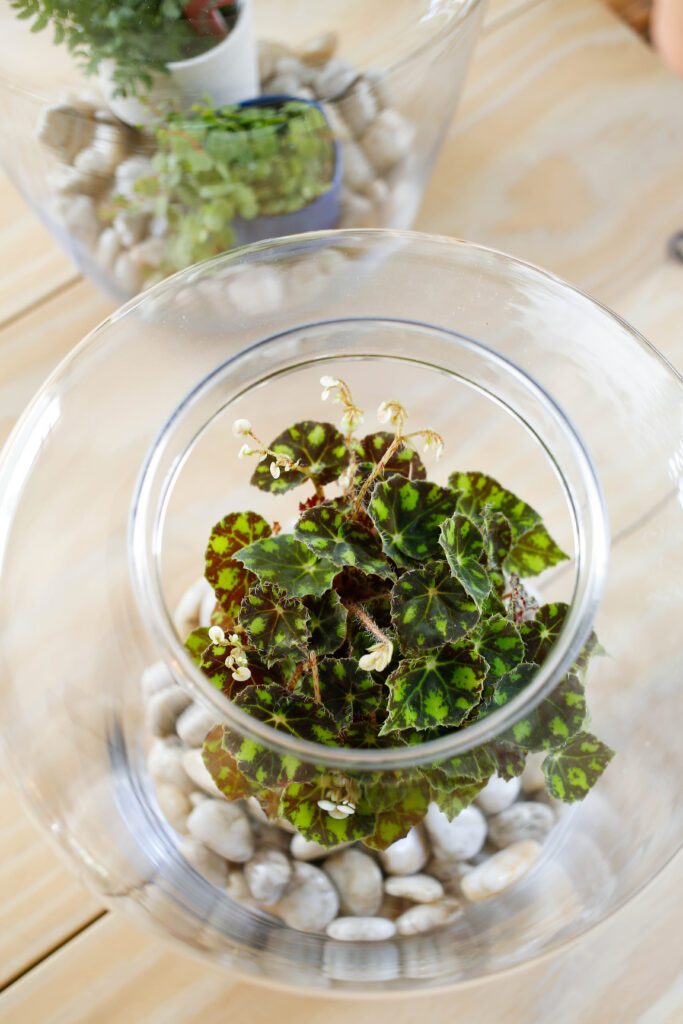

Care:
- Similarly to the Cachepot Terrarium option, ensure the plant is recently watered when you first place it in your terrarium, and make sure leaves aren’t touching the glass.
- Provide water and light levels appropriate for the plant you’ve selected.
- Because your goal is to provide extra humidity to the plant, if you like, you can use your pebble base like a ‘pebble tray’ by adding a shallow layer of water to the pebbles- just ensure the pot isn’t sitting in the water if it has a drainage hole. You’ll also want to use distilled water to prevent hard water mineral buildup, monitor closely for any fungus gnat issues, and regularly empty the pebbles out and wash them well with hot water to prevent algae or pest issues.
- In terrariums with lids, if humidity levels get too high- usually indicated by excessive condensation on the glass that never dissipates- the leaves can be negatively affected. The best way to avoid this is to regularly remove the lid and allow the condensation to dry before closing the lid again. Terrariums like the Griffith, which have an opening at the top, won’t have this issue. You can also opt to just leave the lid off if you select a terrarium that has one.
Create displays highlighting these setups, along with an assortment of pebbles, mini plants, small pots, accessories, and terrarium decor and introduce your customers to the intrigue of terrariums- without the complications of the substrates needed for planted terrariums (and the learning curve of getting the watering just right). With these two methods, you can offer terrariums in a more manageable way- both for you and your customers!
To shop Accent Decor’s wholesale decor and wholesale pots and vases including all new and flower, plant and home products, visit accentdecor.com.
About the author: Danae Horst is the founder of Los Angeles based plant boutique and plant styling studio, Folia Collective. Her life-long love of plants and interior styling, paired with her desire to empower people to keep their plants happy and healthy, led her to start Folia in 2016. In her past work as an interior photo stylist and plant care columnist at the Jungalow, and in the years since starting Folia, Danae has guided tens of thousands of people to the right plants for their space and lifestyle. Danae’s work and plant advice have been featured in the Wallstreet Journal, Washington Post, LA Times, House Beautiful, Better Homes & Gardens, Fine Gardening, and more. The Folia Instagram feed was called a “Plant-Filled Instagram That Will Turn Your Black Thumb Green” by Domino Magazine. Danae’s book, Houseplants For All is available anywhere books are sold. Danae, her husband Bill, and their rescue dog Homer live in a little plant-filled bungalow in Pasadena, California.
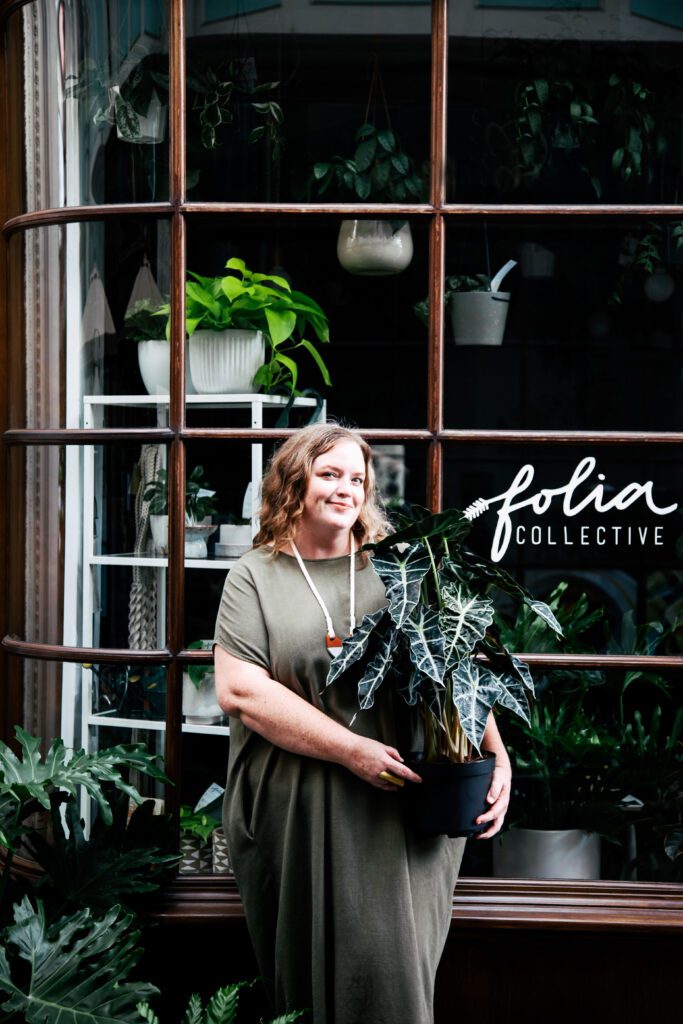

Photo Credit: Amy Dickerson
READY TO BECOME A CUSTOMER?
A quick and easy registration gives you access to design-forward wholesale decor, wholesale pricing, product details ordering options, and much more! Register now.

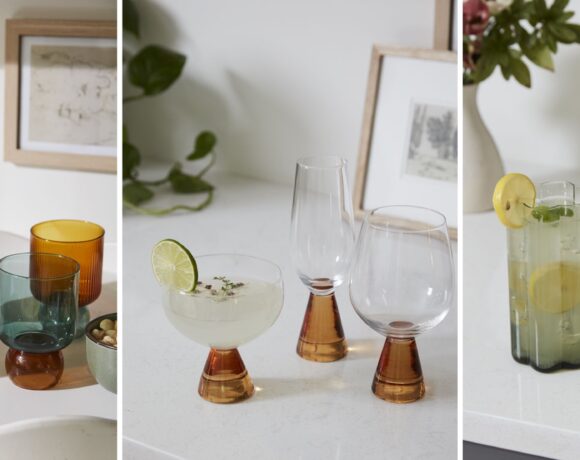
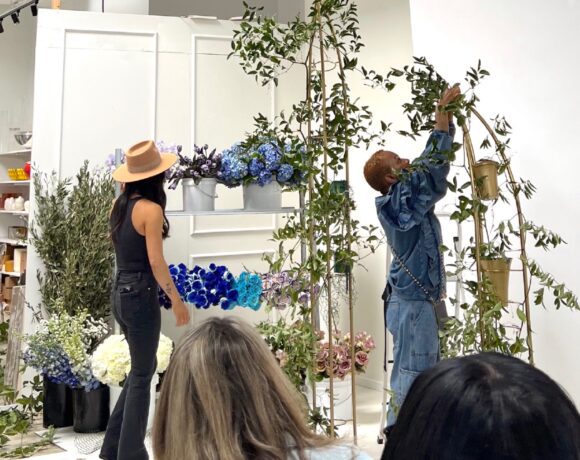
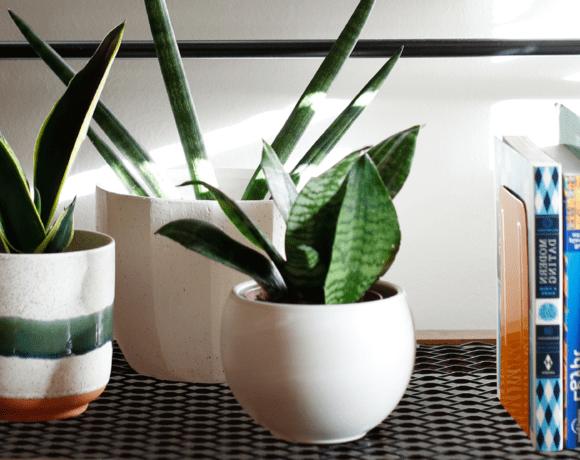

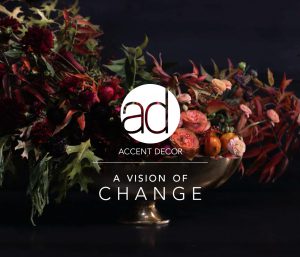
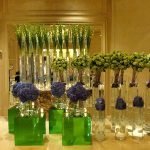
COMMENTS ARE OFF THIS POST